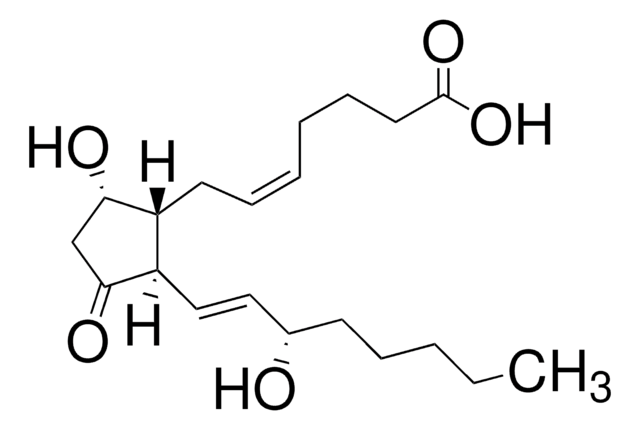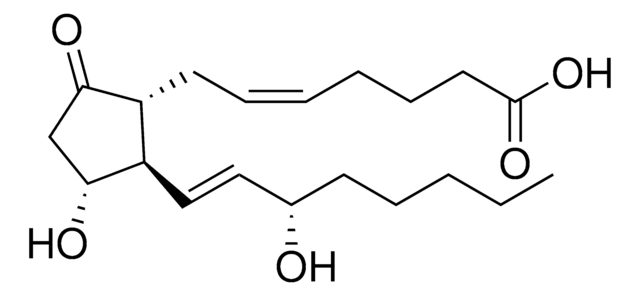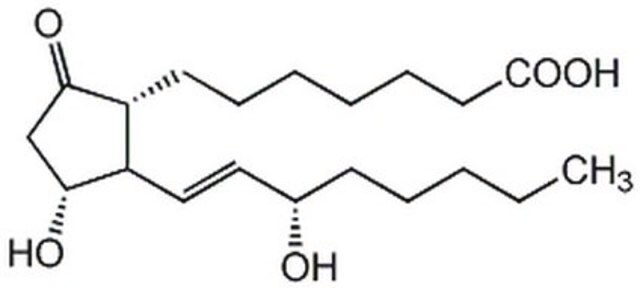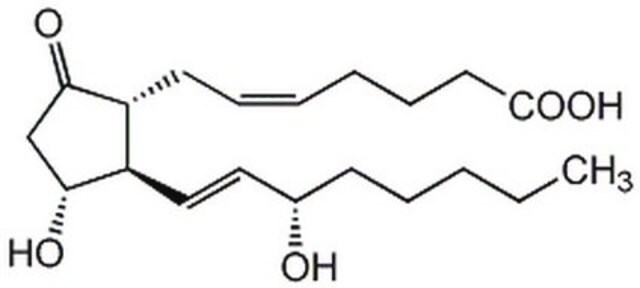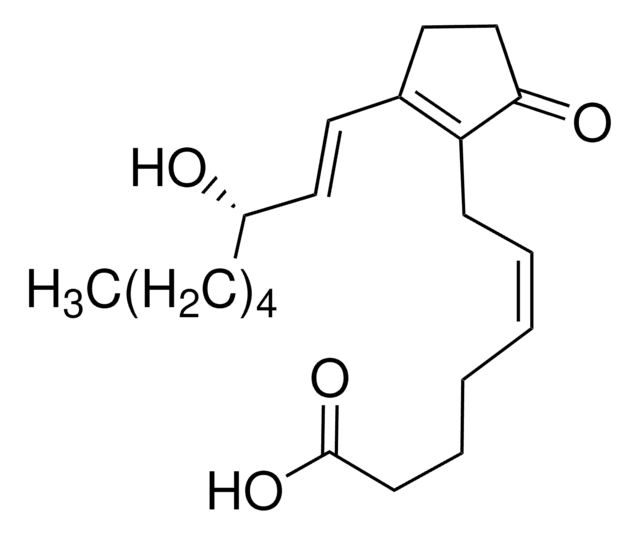538909
Prostaglandin D2
Major prostaglandin metabolite in brain and an important inflammatory mediator in mast cells.
Synonym(s):
Prostaglandin D2, PGD₂
About This Item
Recommended Products
Quality Level
Assay
≥98% (HPLC)
form
solid
manufacturer/tradename
Calbiochem®
storage condition
OK to freeze
color
white
solubility
ethanol: 100 mg/mL
acetone: soluble
ethyl acetate: soluble
methanol: soluble
shipped in
wet ice
storage temp.
−20°C
SMILES string
O[C@@H]1[C@@H]([C@H](C(=O)C1)\C=C\[C@@H](O)CCCCC)C\C=C/CCCC(=O)O
InChI
1S/C20H32O5/c1-2-3-6-9-15(21)12-13-17-16(18(22)14-19(17)23)10-7-4-5-8-11-20(24)25/h4,7,12-13,15-18,21-22H,2-3,5-6,8-11,14H2,1H3,(H,24,25)/b7-4-,13-12+/t15-,16+,17+,18-/m0/s1
InChI key
BHMBVRSPMRCCGG-OUTUXVNYSA-N
General description
Biochem/physiol Actions
Adenylate cyclase
Warning
Reconstitution
Other Notes
Frieling, T., et al. 1994. Am. J. Physiol. 266, G132.
Huttemeier, P.C., et al. 1993. Prostaglandins 45, 177.
Legal Information
Signal Word
Danger
Hazard Statements
Precautionary Statements
Hazard Classifications
Acute Tox. 4 Oral - Repr. 1B
Storage Class Code
6.1C - Combustible acute toxic Cat.3 / toxic compounds or compounds which causing chronic effects
WGK
WGK 3
Flash Point(F)
Not applicable
Flash Point(C)
Not applicable
Certificates of Analysis (COA)
Search for Certificates of Analysis (COA) by entering the products Lot/Batch Number. Lot and Batch Numbers can be found on a product’s label following the words ‘Lot’ or ‘Batch’.
Already Own This Product?
Find documentation for the products that you have recently purchased in the Document Library.
Our team of scientists has experience in all areas of research including Life Science, Material Science, Chemical Synthesis, Chromatography, Analytical and many others.
Contact Technical Service